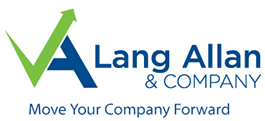Many businesses are facing the financial effects of the pandemic. The loss of clients and decreased cash flow have forced businesses to make some hard choices that involve restructuring debt either in or outside of bankruptcy or simply closing the doors.
Key Considerations
The first task for company leaders is to assess the likelihood of the company succeeding after restructuring, including these factors:
- How much of the company’s expenses go to fixed expenses like rent and equipment leases?
- How much goes to payroll?
- What does the company’s cash flow look like? Is it positive or negative? How likely is it to improve?
- Is the company still competitive in its market? What are the chances of increased market share?
- How much does the company need to spend on new technology to remain viable?
- What cuts can be made and how will those cuts affect business operations? What are the related costs?
- What is the cost of restructuring the business? Weigh that cost against the chances of the company succeeding in the future.
To make a good decision, look at the situation dispassionately.
Creditors
Once the decision to restructure has been made, company leaders need to deal with creditors. If the debt can be renegotiated, the company may not have to file for bankruptcy. Many restaurants, for example, have not been able to pay their rent. If these businesses conclude they can get back to profitability, they may be able to negotiate with their landlords to pay partial rent for a set amount of time. This can be a win-win situation. The restaurant may be able to continue operating and the landlord can keep its tenant.
Debt Consolidation
Contingent on the results of their assessment of the business’s finances and future outlook, some businesses may be able to restructure their debt by taking out a new loan to pay off a single debt at a lower interest rate. Alternatively, the business may be able to obtain a business consolidation loan that will allow it to pay several debts with one monthly payment and a single set of repayment terms.
Bankruptcy
If the business determines the best option is to restructure under bankruptcy, it needs to get professional advice. Most businesses file under Chapter 11. The Small Business Reorganization Act of 2019 also created Subchapter V of Chapter 11 of the Bankruptcy Code, which became effective on February 19, 2020.
Originally, Subchapter V applied to small business debtors with no more than $2,725,625 in debt. The CARES Act expanded Subchapter V eligibility for a period of one year (or longer if extended by Congress) by increasing the cap to $7,500,000 in aggregate secured and unsecured noncontingent and liquidated debt. Subchapter V is more debtor-friendly than Chapter 11. Businesses looking at this option should verify eligibility.
Before making any decision, consult professionals who can guide you in the decision-making process. Too much is at stake to tackle this decision without help. Contact us today for sound advice.
